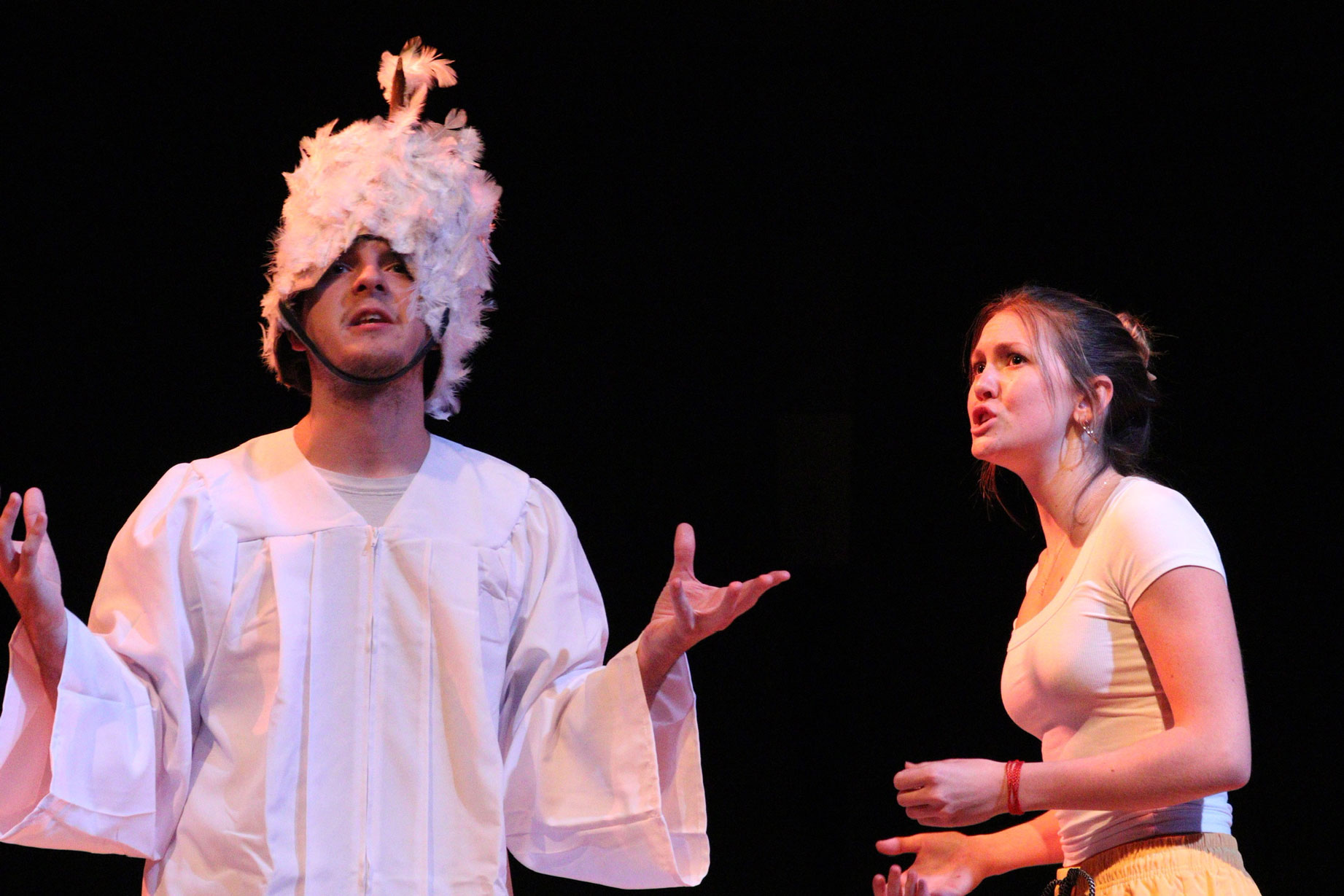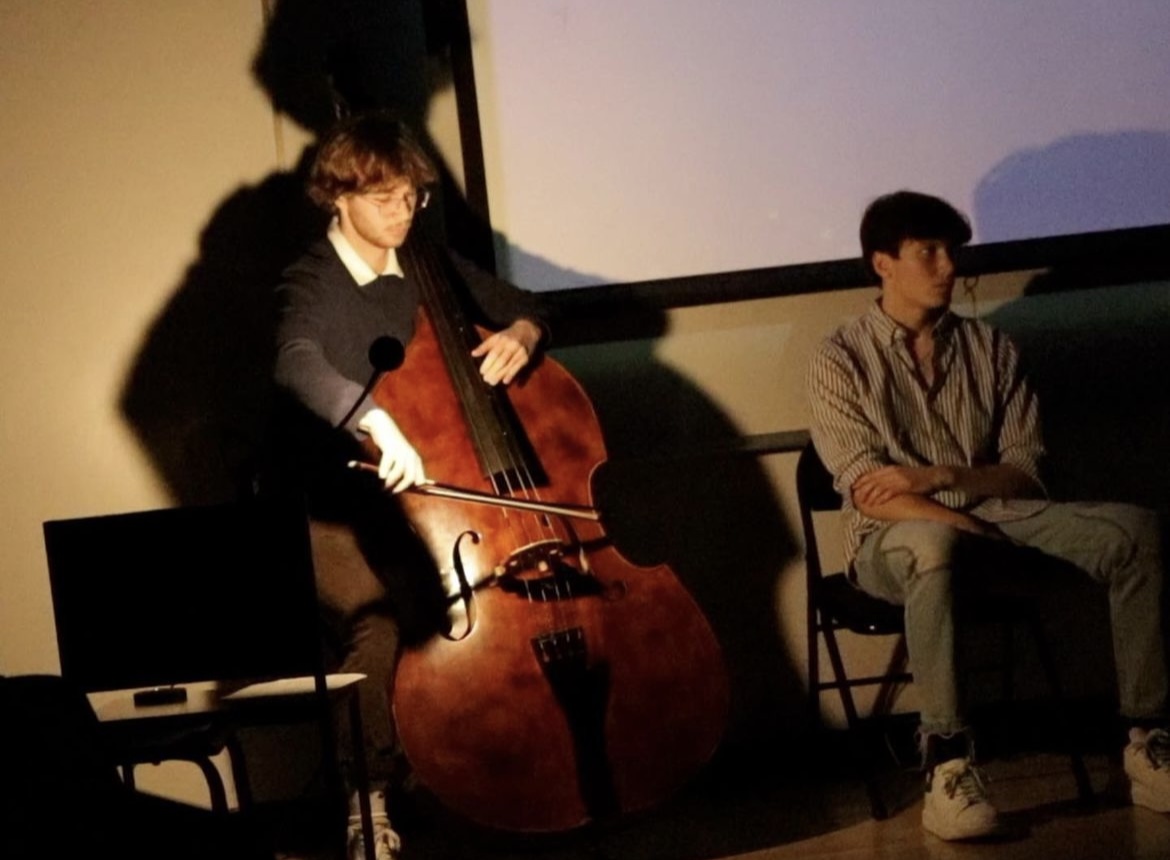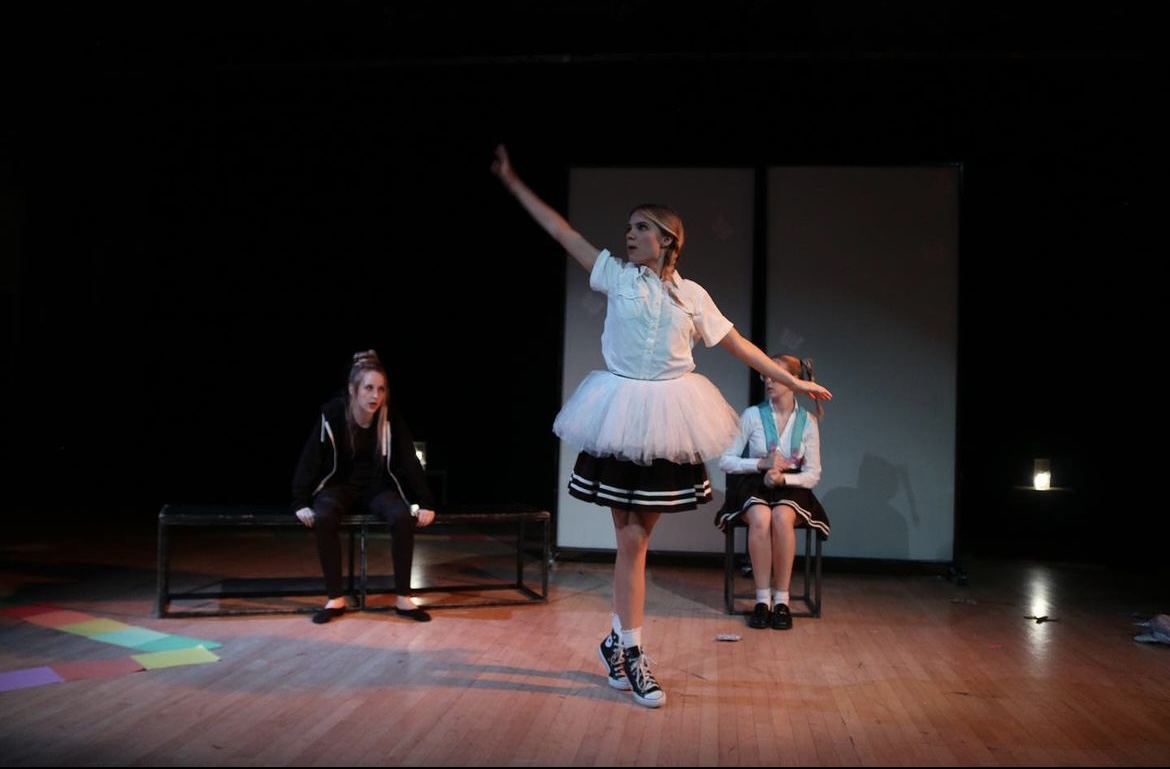SMU Student Theatre Group Promotes Cross-Collaboration for Arts Majors
SMU Student Theatre (SMUST) produces student-led productions that allow for interdisciplinary work between Meadows students in a variety of majors.

SMU Student Theatre (SMUST) is a campus organization that provides a unique experience for students to express their creativity outside of the classroom by devising and participating in student-produced shows. These productions, which can range from staged readings to full original plays, are entirely helmed by students from start to finish without any faculty assistance, granting the opportunity for artistic growth and collaboration.
Being involved in a student-led group like SMUST allows members to not only grow their artistic skillsets, but also build connections with fellow students. When Addison Vaughn, the current co-president of SMUST, wrote her original play Catherine, she knew she wanted to have original music composed for the production. She reached out to her friend and music composition major, Nick Ward, to help her bring that idea to life. After meeting and brainstorming with him, they came up with beautiful musical motifs that elevated the production.
“I think an authentic artist lives and breathes through diverse inspiration from different mediums,” explains Vaughn of her collaboration with Ward. “Collaborating with and learning from other Meadows students influences my own work and allows me to be part of a bigger artistic discourse outside my specific medium.”

Larsen Nichols, Vaughn’s co-president of the organization, also utilized the talents of another Meadows student for one of their SMUST productions. They adapted and translated the play Salome, originally by Oscar Wilde, for their Meyer Undergraduate Research Fellowship and knew they wanted to have a dance component in the show. They then asked Jenna Davis, a friend and dance major at Meadows, to choreograph a piece and work with the show’s actor to create something fitting for the production. Ultimately, the collaboration on the show’s choreography elevated the production to new heights. But this cooperative work can extend outside of the performing arts majors as well.
“For certain shows, you’ll need people with sound design experience, you’ll need people who know how to film, or you’ll need people who can create multimedia aspects,” says Nichols, who has been involved with SMUST for over three years. “Pulling all of those skills together make an end product that’s much more cohesive and interesting because you get all of these different combined skillsets.”

Though traditionally most SMUST productions have solely featured theatre majors in on-stage capacities, the organization is trying to expand upon their behind-the-scenes collaborative efforts by opening up on-stage opportunities to those outside of the Division of Theatre. Recently they’ve had students from both film and even engineering majors participate in productions.
From acting, directing, writing, and producing, SMUST teaches everyone involved in the organization, no matter their role or background, about the benefits of collaboration and the intricacies of independent theatre-making. And though both Nichols and Vaughn will be graduating from SMU this May, they are confident that what they’ve learned not only through their theatre majors but also through SMUST will be valuable as they navigate their professional careers.
“I know that when I graduate with my theatre degree, a lot of the work I will get will likely be from my connections and collaborations with fellow Meadows students,” Vaughn says. “Meadows is a beautiful school that prepares artists for post-academic life.”